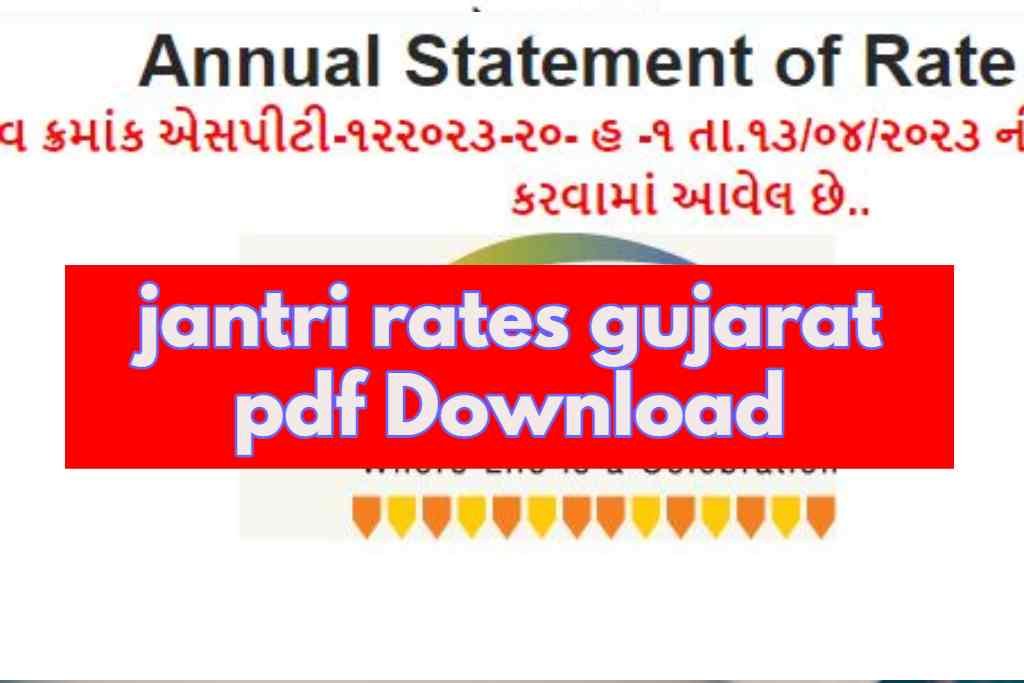jantri rates gujarat pdf – When it comes to real estate transactions in Gujarat, understanding the Jantri rates is crucial. These rates play a significant role in determining the value of properties for various purposes, including stamp duty, property tax, and capital gains tax. In this guide, we will delve into the concept of Jantri rates in Gujarat and provide you with all the essential information you need to know.
What are Jantri Rates?
Jantri rates, also known as government-determined rates or circle rates, refer to the minimum valuation of land or property set by the state government. These rates are revised periodically and vary from one location to another within Gujarat. The government determines these rates to ensure fair property transactions and prevent undervaluation or underreporting of property prices.
How are Jantri Rates Calculated?
The calculation of Jantri rates involves various factors, including the location of the property, the type of property (residential, commercial, agricultural), the amenities available in the area, and the market value of similar properties in the vicinity. The government-appointed valuation committee determines these rates after considering these factors and conducting thorough research and analysis.
Download
Importance of Jantri Rates
jantri rates gujarat pdf– Jantri rates serve multiple purposes and have significant implications for property owners, buyers, and the government. Here are some key reasons why Jantri rates are important:
- Stamp Duty: Jantri rates are used to calculate the stamp duty payable during property transactions. The stamp duty is a percentage of the property’s value, as per the Jantri rates, and is paid to the government.
- Property Tax: Municipal corporations use Jantri rates to determine the property tax payable by property owners. The higher the Jantri rate, the higher the property tax.
- Capital Gains Tax: Jantri rates play a crucial role in determining the capital gains tax liability when selling a property. The capital gains tax is calculated based on the difference between the sale price and the Jantri rate.
- Prevention of Undervaluation: Jantri rates help prevent undervaluation or underreporting of property prices, ensuring fair transactions and discouraging tax evasion.
Where to Find Jantri Rates in Gujarat?
The Jantri rates for different locations in Gujarat are published by the state government and are available in the form of PDF documents. These documents can be accessed on the official website of the Revenue Department of Gujarat. Additionally, you can also visit the local Sub-Registrar’s office or consult a property consultant to obtain the latest Jantri rates for a specific area.
How to Use Jantri Rates?
When engaging in a property transaction, it is essential to consider the Jantri rates to ensure compliance with legal requirements and avoid any disputes or penalties. Here are some key points to keep in mind:
- Verify the prevailing Jantri rates for the specific location where the property is situated.
- Calculate the stamp duty payable based on the Jantri rates and include it in your budget.
- Ensure that the sale price of the property is not significantly lower than the Jantri rate to avoid any suspicion of undervaluation.
- Consult a legal professional or property consultant to guide you through the process and ensure compliance with all legal requirements.
Conclusion
Understanding Jantri rates in Gujarat is crucial for anyone involved in real estate transactions. These rates play a significant role in determining the value of properties and have implications for stamp duty, property tax, and capital gains tax. By staying informed about the prevailing Jantri rates and following the legal procedures, you can ensure a smooth and transparent property transaction process.
Remember to consult official government sources or seek professional advice to obtain the most accurate and up-to-date Jantri rates for your specific location in Gujarat.






